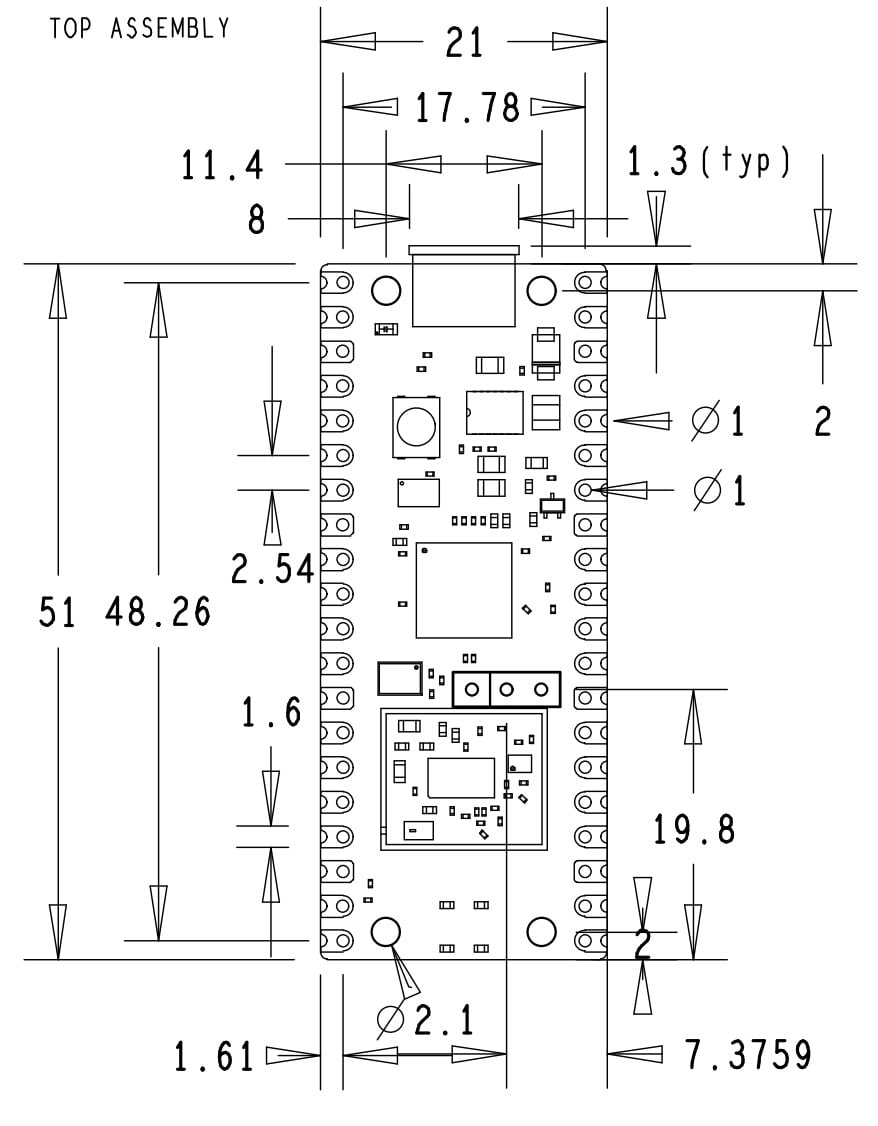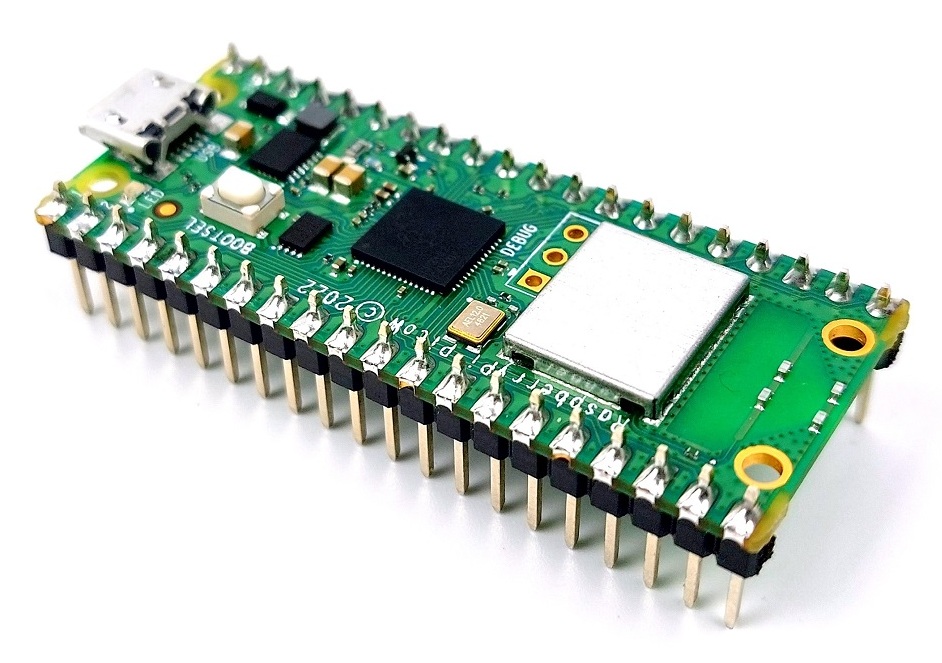รถเข็นของคุณว่างเปล่า!
Raspberry Pi Pico Wireless - Pre-soldered Headers
- แบรนด์ Raspberry Pi รหัสสินค้า: RPI-PICO-WSH
Note: During the launching, on 30th June 2022, Raspberry Pi Pico W is available for US and EU only. Cytron Technologies is expected to have ready stock by September October 2022 due to compliance.
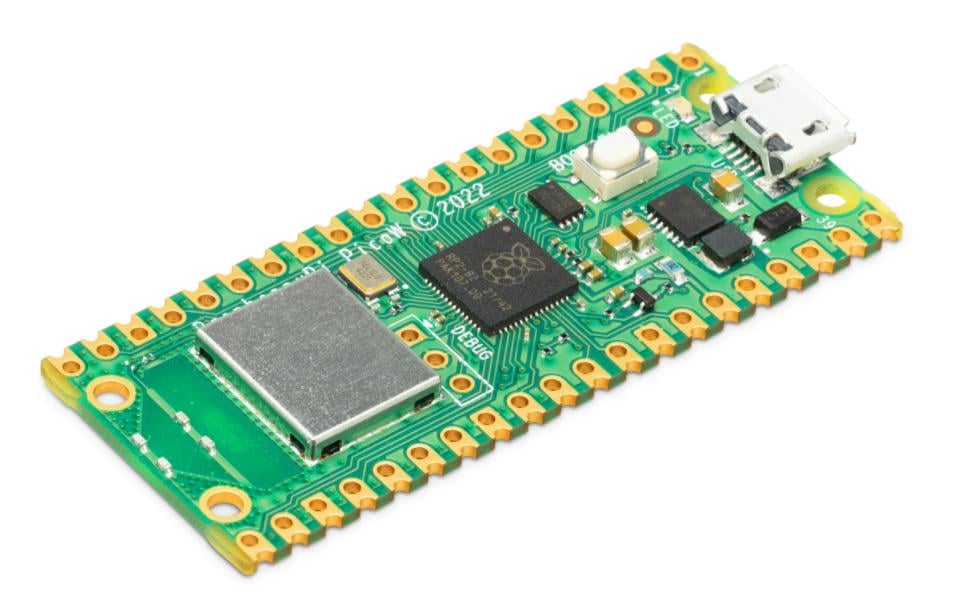
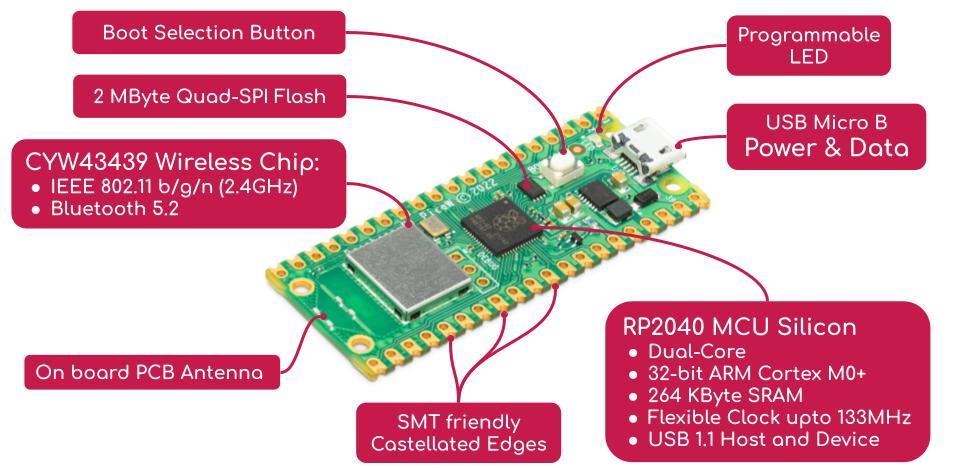
Released on the 30th June 2022, the Raspberry Pi Pico W is RP2040 with Wireless. Raspberry Pi Pico has caught much attention since its launch in early 2021. However, it lacks built-in wireless; therefore many add another wireless module for IoT projects. Raspberry Pi team understands the importance of built-in wireless and has launched the Pico W.
It is the Raspberry Pi Pico with built-in wireless :) Best of all, it has the same 40-pin assignment, dimension, and castellated edge PCB as the Raspberry Pi Pico. The Raspberry Pi Pico W is a direct replacement for Raspberry Pi Pico if you need to upgrade your product with Wireless or IoT! Of course, Raspberry Pi Pico W can be used for physical computing projects where it controls anything from small electronic components, LEDs, and motors; to reading information from sensors, or communicating with other microcontrollers.
Checkout Lee from leepspvideo working on Raspberry Pi Pico W with MicroPython:
Also Jeff Geerling talking about this latest Pico with Wireless:
We probably have lots of microcontrollers in our house already. For example, a washing machine is controlled by a microcontroller; most likely our watch is too; there is also one in a microwave. Of course, all these microcontrollers already have their programs for the applications. With Raspberry Pi Pico W (Wireless), upgrading your product into IoT (Internet of Things) will be easy!
As Python is the official programming language of Raspberry Pi OS, MicroPython is chosen to be one of the programming languages for Raspberry Pi Pico W. MicroPython is a lean and efficient implementation of the Python 3 programming language that includes a small subset of the Python standard library and is optimized to run on microcontrollers and in constrained environments.
MicroPython is packed full of advanced features such as interactive prompt, arbitrary precision integers, closures, list comprehension, generators, exception handling, and more. Yet it is compact enough to fit and run within a microcontroller such as Raspberry Pi Pico W. MicroPython aims to be as compatible with normal Python as possible to allow you to transfer code with ease from the desktop to a microcontroller or embedded system.
Programming loading of MicroPython into Raspberry Pi Pico W is effortless. Just connect the Pico to any computer (including Raspberry Pi SBC) via USB, then drag and drop the file onto it. Yes! It is that easy! And Raspberry Pi Foundation has put together a downloadable UF2 file to let you install MicroPython more easily. Visit the Getting Started page by Raspberry Pi to download the necessary file. Or you can get yourself a printed copy of the "Get started with MicroPython on Raspberry Pi Pico" and start your digital making journey.
Not to worry, C/C++ is not forgotten :) Raspberry Pi Pico W can also be programmed with C or C++ Programming language. To get started, please visit this page.

You can always connect the Raspberry Pi Pico W to any preferred computer with Windows, macOS, and Linux that supports Python 3.0, yet connecting it with the Raspberry Pi Single Board Computer will be perfect as it is designed by the same team. The official Operating System, Raspberry Pi OS comes pre-installed with Thonny Python IDE which is ready for you to get started writing MicroPython code for Pico W. If you are using another OS (Windows, macOS, or other Linux distribution), please visit https://thonny.org/ to download the IDE and install it.
Same as Raspberry Pi Pico, Raspberry Pi Pico W is based on the 1st silicon designed by the engineers from the Raspberry Pi Foundation. The RP2040 is a feature-rich microcontroller. It comes with not one, but two cores (dual-core) of a 32-bit ARM Cortex M0+ processor. Flexible clock, yet configurable up to a maximum speed of 133MHz! This tiny MCU comes with a whopping 264 Kbyte of SRAM, an external Quad-SPI with a capacity of 2 MByte and eXecute in Place (XIP). Large RAM and Flash size enable you to write high-level programming languages like MicroPython and CircuitPython for Raspberry Pi Pico W.
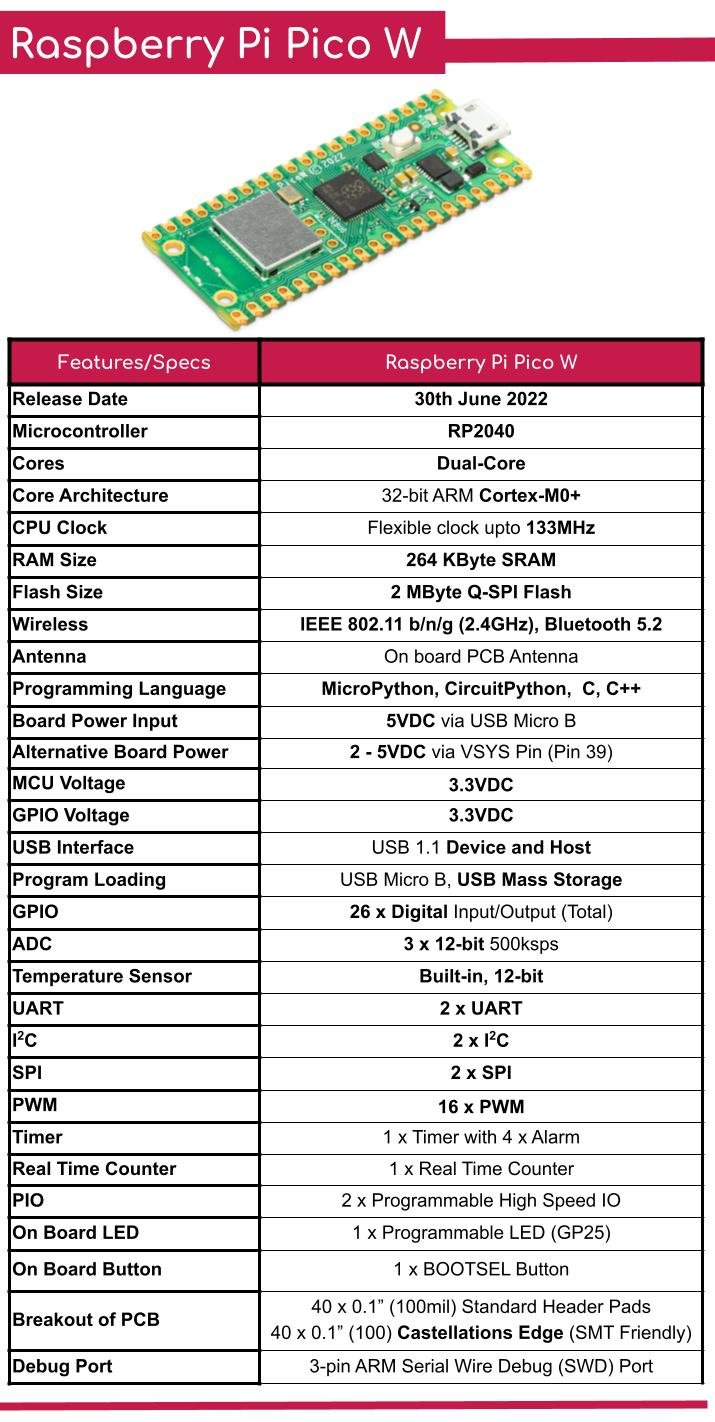
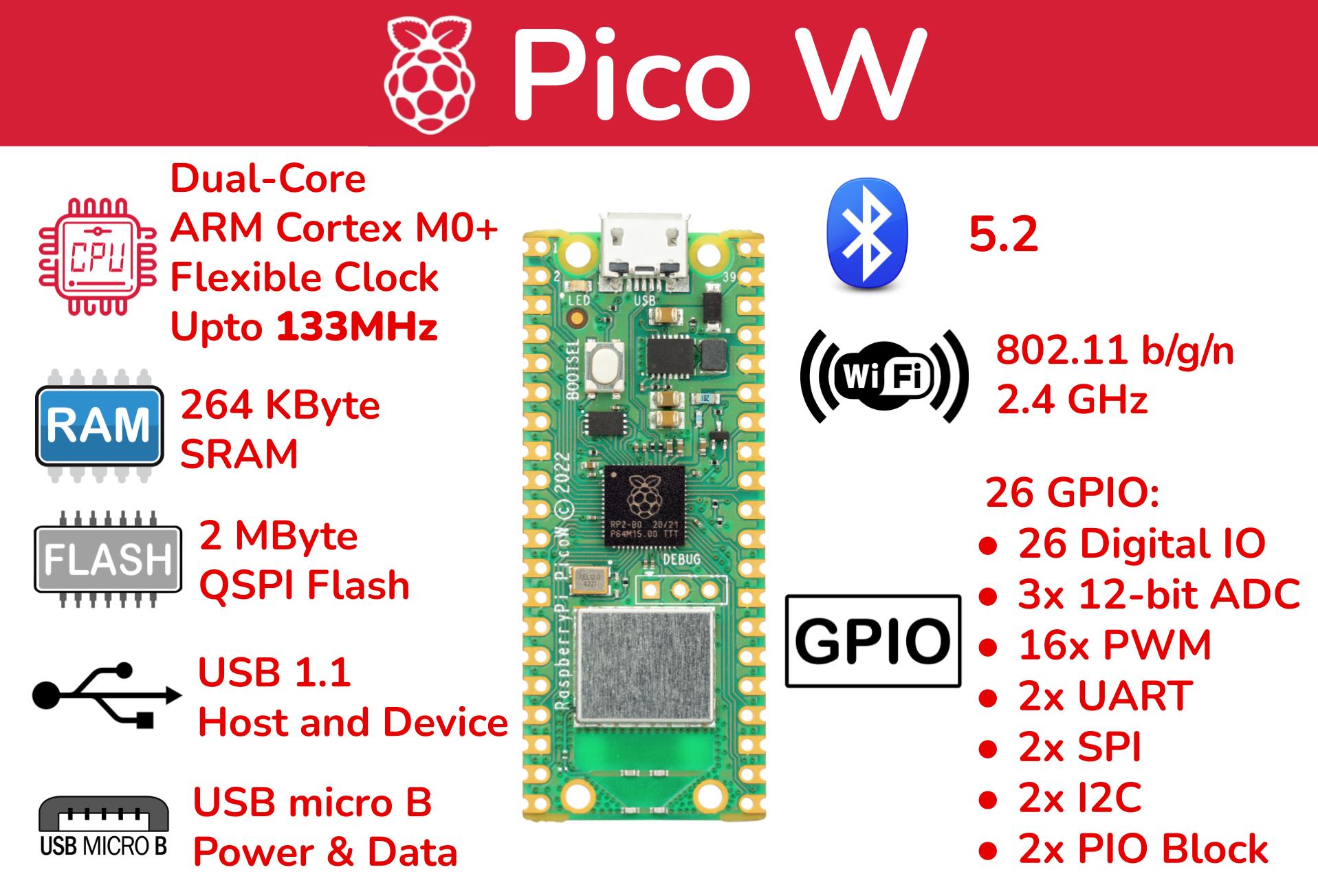
It has been more than a year since the launch of Raspberry Pi Pico and RP2040, the 1st Microcontroller Platform with the first in-house designed MCU silicon! Yet, the Raspberry Pi team never stops surprising us with their work. This tiny board comes with a Dual-core 32-bit processor, ARM Cortex M0+ is an optimized superset of the Cortex-M0. The Cortex-M0+ has complete instruction set compatibility with the Cortex-M0 thus allowing the use of the same compiler and debug tools. The Cortex-M0+ pipeline was reduced from 3 to 2 stages, which lowers the power usage. On top of dual-core Cortex M0+, Raspberry Pi Pico W comes with a reconfigurable clock speed, with the on-chip PLL (Phase-Locked Loop), which allows the MCU to be clocked at a maximum speed of 133MHz, of course, a configuration is necessary. And with the launch of Raspberry Pi Pico W, they deliver another great feature, the onboard wireless module.
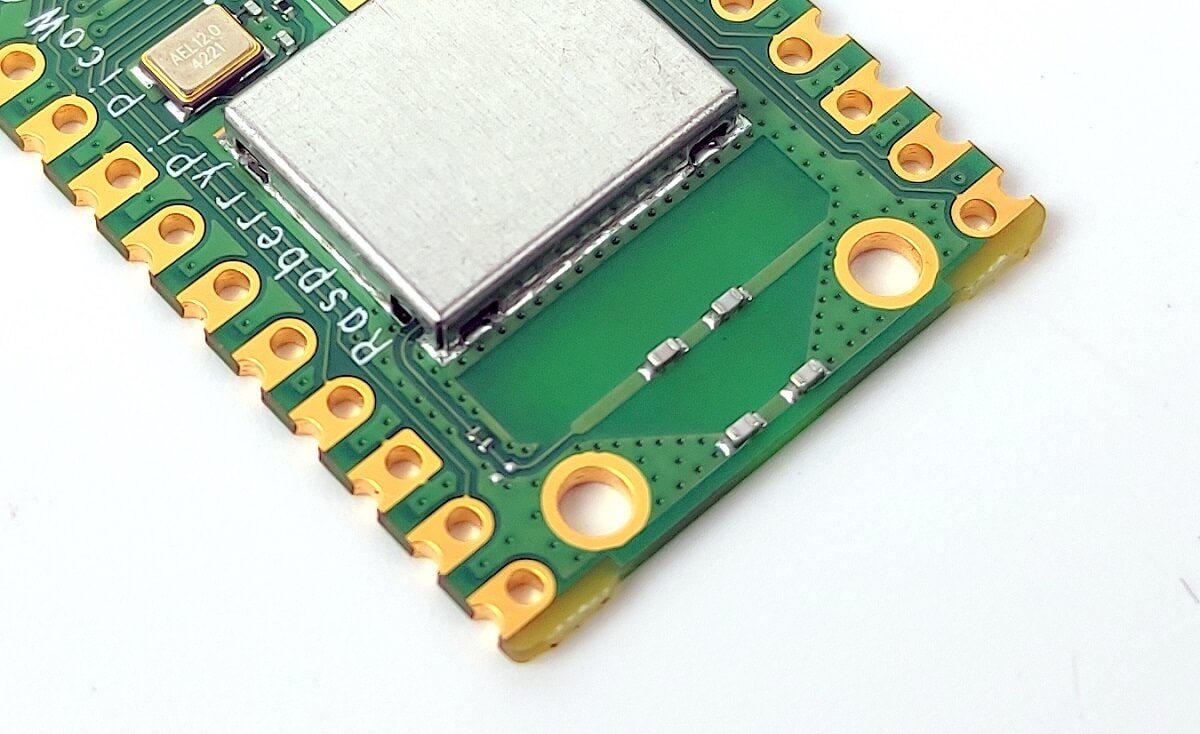
Raspberry Pi Pico W comes with Infineon CYC43439 Wireless Chip. Contained under a metal "can" to help in wireless compliance certification. It offers Wireless LAN, WiFi 4, IEEE802.11 b/g/n (2.4GHz), and Bluetooth 5.2 (Bluetooth is not available during launching) capability to Raspberry Pi Pico W. Besides, there is also an onboard PCB antenna, you can get the wireless function right out of the box.
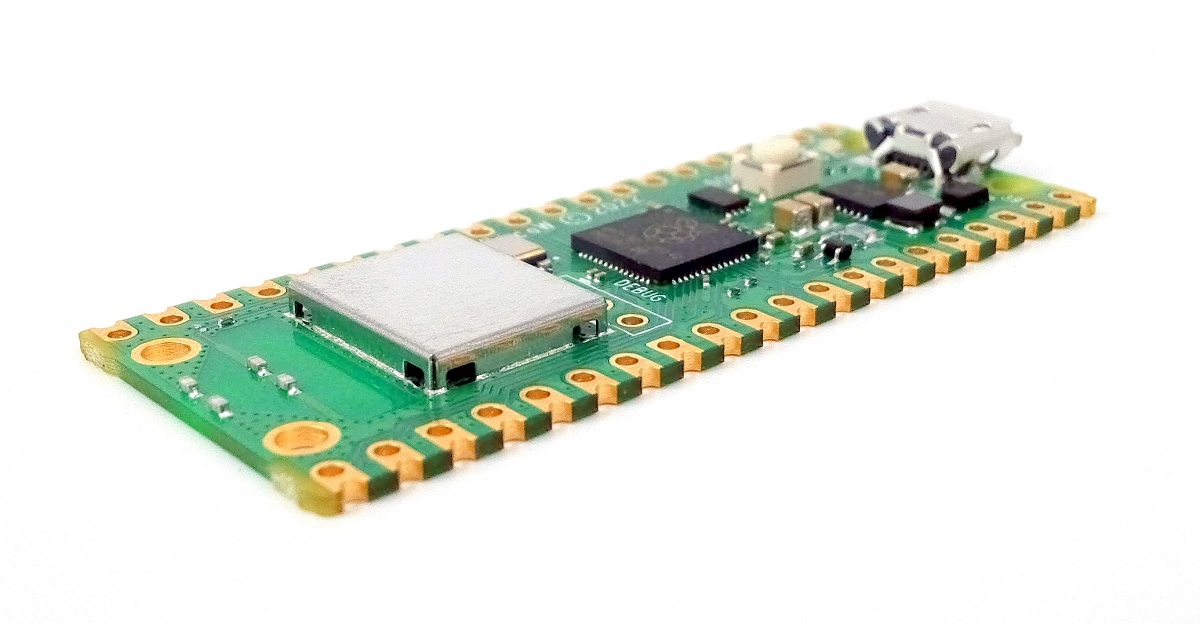
Again, Raspberry Pi Pico W has the same layout and SMT-friendly PCB as its pre-successor, Raspberry Pi Pico. Raspberry Pi Pico W is not only super affordable, but it is also ready to be embedded in any product out of the box. With the unique PCB design, for both prototyping, and also SMT (Surface Mount Technology); it is perfect for everyone. Raspberry Pi Pico W extended out to 40-pin 21x51 DIP (Dual Inline Package) style, 1mm thick PCB with 0.1" (100mil) through-hole pins. The width between holes is breadboard friendly, so students, makers, and engineers can use Pico W on a breadboard or any standard PCB board for development or prototyping. Of course, you still need to solder the header pins manually :) Besides considering the ease of use for digital making, Raspberry Pi Pico W is also ready for production. The pins are further extended to the PCB edge with a castellated circuit board. This enables it to be soldered to another PCB board without the need for extra header pins, making it a smaller and compact finished product. Not to forget, with the same pins assignment and dimension, Raspberry Pi Pico W is a direct drop-in replacement for any Raspberry Pi Pico project! Awesome!
Raspberry Pi Pico W also incorporates the famous and commonly used USB Micro B receptor for both Power and Data. Just simply connect the USB Micro B cable to power it and load the program into it. No additional USB to Serial adapter is needed. Neat!
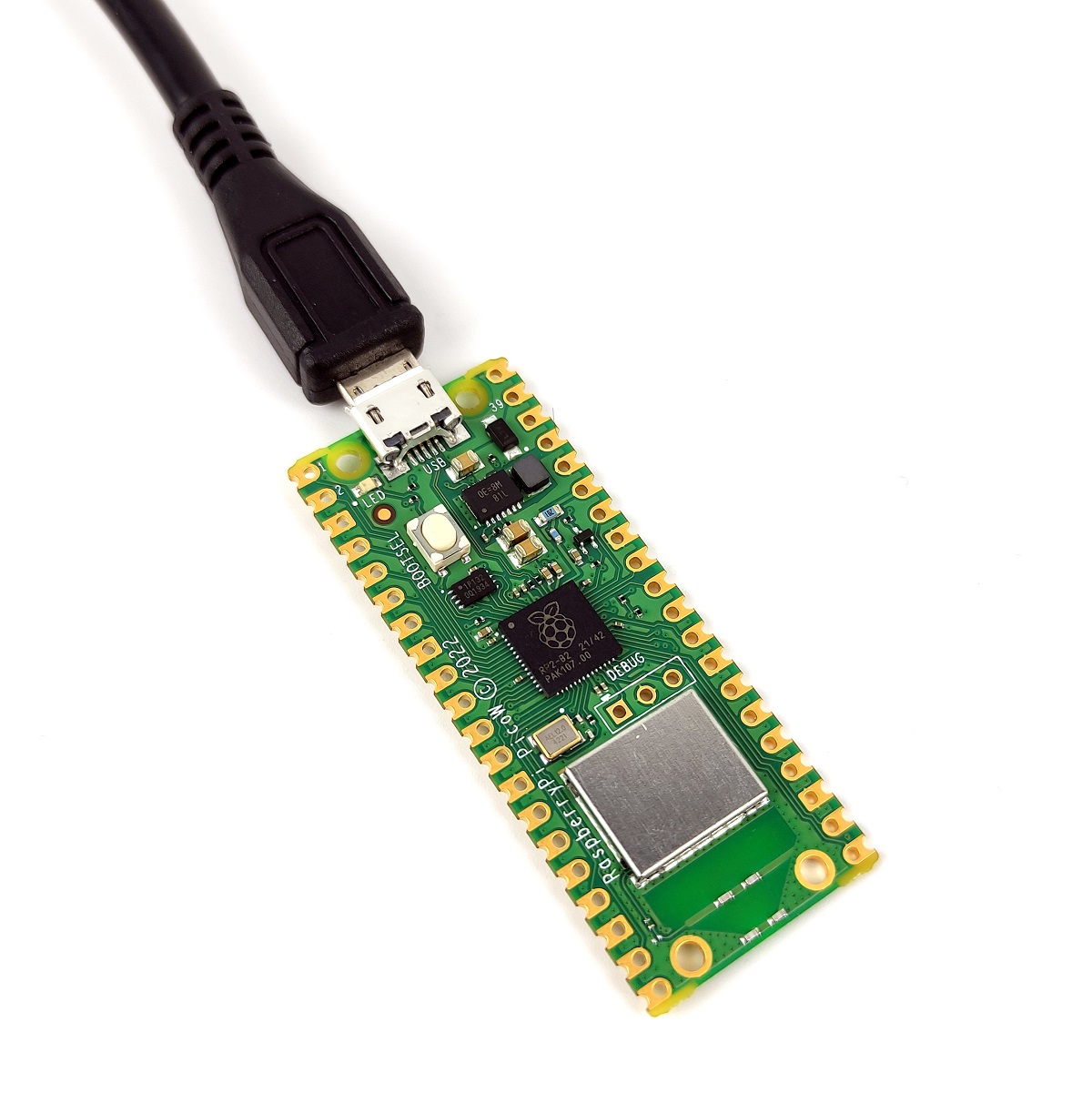
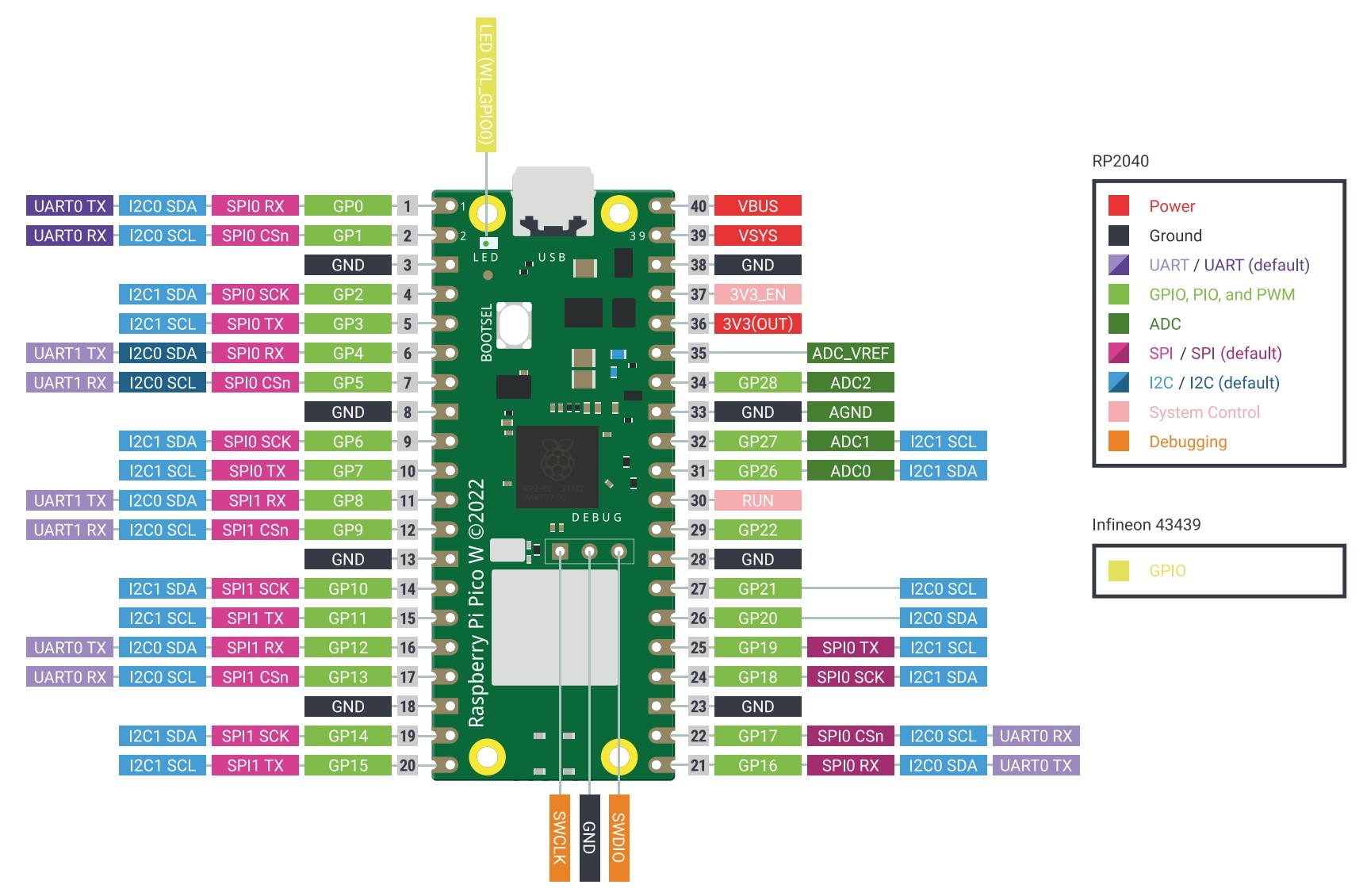
GPIO, ADC, UART, SPI, I2C of Raspberry Pi Pico W
Having exactly the pins assignment as Raspberry Pi Pico, the Pico W has 26 GPIO (3.3V) broken out for applications, it has more GPIO pins than Arduino UNO, Arduino NANO, Arduino MKR Zero, or even Arduino RP2040 Connect. Among these 26 GPIOs, 3 can be configured as 12-bit ADC with 500ksps (kilo sample per second), 2 x UART, 2 x SPI, 2 x I2C, and up to 16 x PWM pin. Internally, it also comes with 1 x Timer with 4 alarms and 1 x Real Time Counter. Not to forget the dual Programmable IO (PIO) peripherals which are flexible and user-programmable high-speed IO. It can emulate interfaces such as SD card and VGA.
Note: The Raspberry Pi Pico W GPIOs run at 3.3VDC. The maximum voltage that the I/O pin can tolerate is 3.3V. Applying voltages higher than 3.3V to any I/O pin could DAMAGE the board.
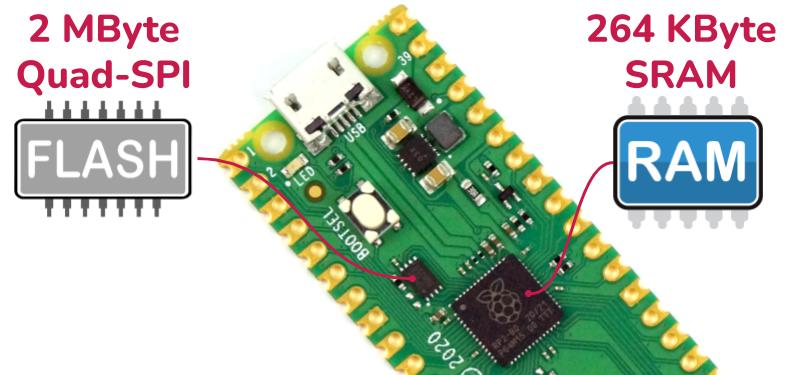
With 2 MByte of external QSPI Flash and 264 KByte of SRAM on Raspberry Pi Pico W, it will never prompt you about insufficient memory :) Besides, the large size of RAM and Flash also enable Raspberry Pi Pico W to be supported with higher programming languages such as MicroPython, CirciutPython, or even Javascript.
With the USB Micro B receptor ready as the physical connection to a computer and the USB 1.1 device on the RP2040 (MCU), the Raspberry Pi Pico W offers a simple and straightforward program loading method. It is like copying files from a drive to another drive. The Pico W appears as USB mass storage when it is connected to the computer via the USB port! It becomes a USB drive! Write your code and drag the file into that USB drive. After the file is completely copied, the Pico W will reboot and run the program :) Easy right?
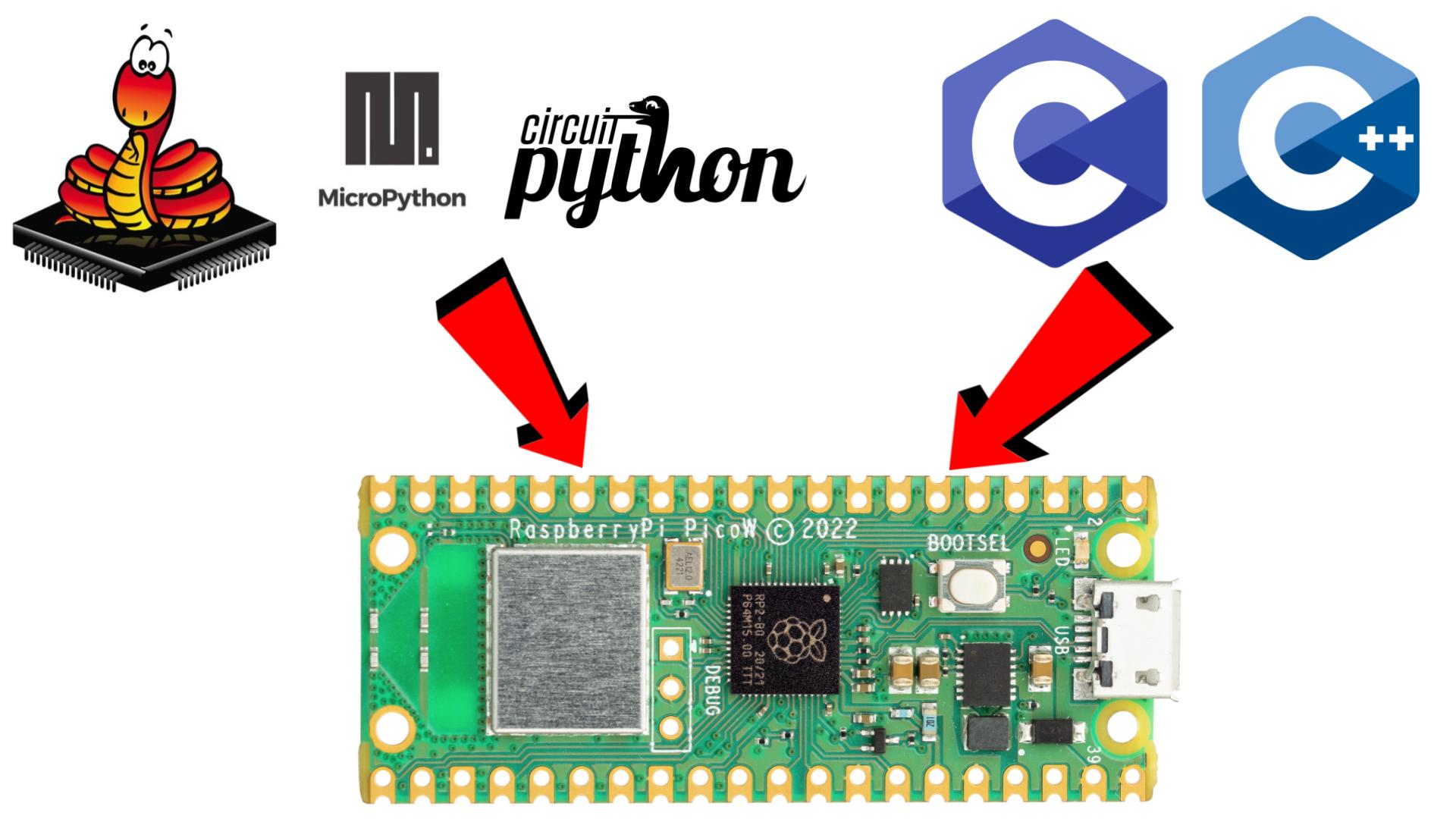
Python is one of the most famous and powerful programming languages nowadays. It is being used in many high-level applications such as AI (Artificial intelligence), DL (Deep Learning) and Web and Internet development, and more. Python is used successfully in thousands of real-world business applications around the world, including many large and mission-critical systems. MicroPython is a lean and efficient implementation of the Python 3 programming language that includes a small subset of the Python standard library and is optimized to run on microcontrollers and in constrained environments. You will love it.
Besides MicroPython, Raspberry Pi Pico W also supports CircuitPython, C and C++ Programming Langauge. Check out the C/C++ SDK for more info. All these programming languages are loaded into Raspberry Pi Pico W through USB Mass Storage which enables the simple drag and drop method (like copying a file to another drive).

The USB Micro B receptor is the main power input to get the Raspberry Pi Pico W "running", just connect the USB cable to any USB port and it will supply the power needed for the MCU to execute the program. In the case where you do not want to use the USB port, for example, a battery-powered, or a customized product; not to worry, Raspberry Pi Pico comes with a flexible onboard buck-boost Switch Mode Power Supply (SMPS) that is capable of accepting 2 to 5VDC input and converts it to a stable 3.3V supply for the RP2040 MCU to operate. Simply awesome! The pin is VSYS (Pin 39). With a wide voltage range, Raspberry Pi Pico W can be powered by USB, 2 x AA battery, 2 x NiMH AA battery, 1 x 18650 Li-ion battery, or 1 x Cell LiPo battery!
In the case, you are a beginner and not familiar with Raspberry Pi Pico W, fear not! It is quite a beginner-friendly microcontroller board. Here are our recommendations for the beginner, maker, and engineer:
